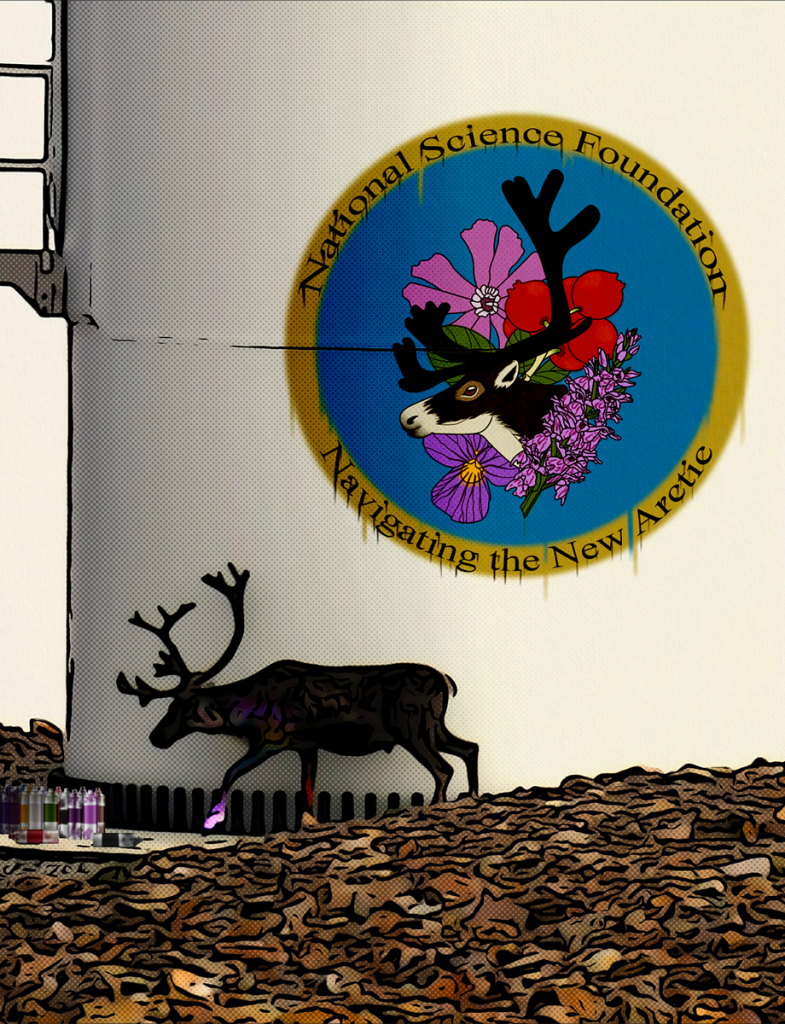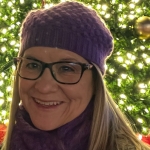Through Polar STEAM, I was partnered to collaborate virtually with three scientists leading the “Interactions of natural and social systems with climate change, globalization, and infrastructure development in the Arctic” project team, which is part of the greater National Science Foundation research project, Navigating the New Arctic. Many scientists are researching the impact of climate change on the natural and built environments in the Arctic. I’ve been creating STEAM projects with students for over twenty years while teaching digital multimedia at Clovis Community College in Fresno, California. I’ve also collaborated with scientists on a few projects as well. I couldn’t wait to get started.
Drs. Peter Ungar, Mary Heskel, and Aleksey Sheshukov explained (patiently) their areas of expertise, Arctic research projects, and provided me with a virtual mountain of photographs from their fieldwork. We talked about what projects would be suitable and appropriate for a variety of audiences. What would be engaging to different ages, interests and levels of scientific knowledge? I knew that I wanted my Photoshop class to be involved with this project, so I suggested creating a comic book. I had been teaching Photoshop through the lens of comics arts for the past several years and thought a STEAM project such as this would be a perfect pairing. So many more people could learn about the Arctic and the research being conducted there while also learning Photoshop and about comics arts. Everyone liked the idea and sent me comics about science they had gotten. So, in the summer of 2023, I set about building a story from the photos that Peter, Mary, Aleksey, and some of their colleagues had sent me.
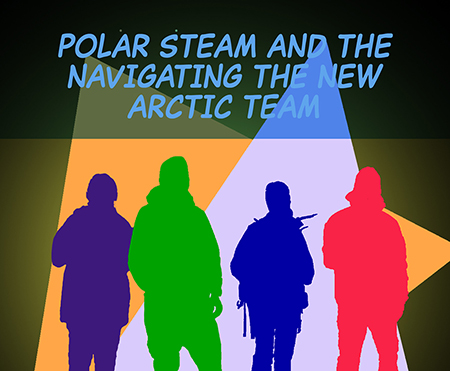
When the semester started in late summer, my students learned about comic arts and Photoshop in class, then as homework, gathered information and images about the animals, land masses, bodies of water, and human cultures and their built environments. They also learned about how to use Creative Commons licensing for some of the photos that made it into the comic book. We compiled and organized the information and images into distinct sections of the comic. The first part was what we called “Arctic 101,” followed by Peter, Mary, and Aleksey’s research. The last part of the comic asked the viewer what they could do and provided suggestions. In a class discussion, we set about deciding on a “look” for the comic. Would we use flat colors and outlines or would we digitally mimic old-school printed comics? As a class, we decided that the images should be super-saturated like cartoons but combined with the dot patterns used in manga comics.

After we had decided on the “look,” one student said, “Remember when I thought penguins lived in the Arctic?” He chuckled and said that maybe we should put a penguin in one of the panels only to have an Arctic animal tell the penguin to go home because it didn’t belong there. Everyone considered this idea but didn’t really like the idea of being mean to a penguin just because it was lost. Then someone suggested that a penguin could travel from Antarctica to the Arctic to learn about climate change. The idea clicked and Penny Penguin was born.
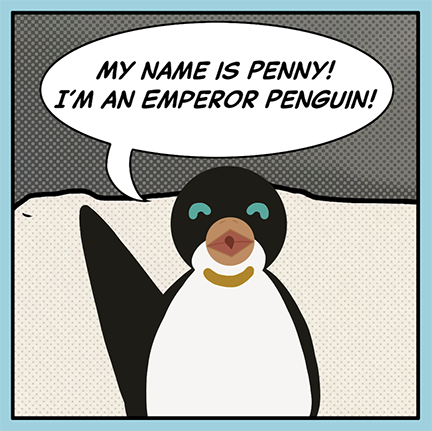
Everyone was excited about the idea and ready to get to work. Each student was assigned a number of pages to create. They were responsible for adding comedic anthropomorphizing to the images as well as determining panels, text boxes, page layouts, gutters, and more. As pages were finished, we would have critiques, carefully examining every aspect of a page. Were the gutters surrounding the panels uniform? Did the composition of the page engage the viewer or was it confusing? Was text spelled correctly? Was punctuation used correctly? How about that grammar?
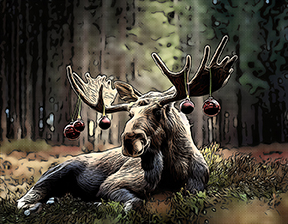
Once all adjustments and corrections were made, the pages were handed off to the only advanced Photoshop student in the class. It was her job to incorporate Penny into this Arctic adventure. She also designed Penny and added little fun facts and side narration throughout the comic.
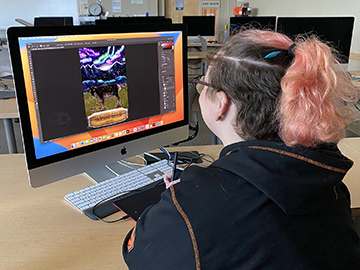
Most of the rough draft was finished by the end of the semester except for the credit pages. The “Arctic 101” section was printed and exhibited at the Student Art Showcase. After the credit pages were finalized, two versions of the comic book were created. The first is a low-resolution PDF and is suitable for online reading. The second is a high-resolution PDF and can be downloaded and printed.
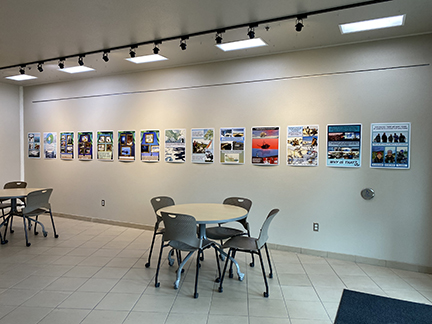
So, what’s next for Penny’s Arctic Adventure? Translations! The comic book will be translated into as many languages as there are volunteers for. The translated comic books will be available for download as well. I want the comic book to reach as many people as possible around the world. Also, students in my upcoming 2D animation and multimedia class will be creating an original animation based on the Arctic 101 portion of the comic book. None of us knows what this will look like, but we do know that our music department will compose the soundtrack for the animation. Finally, someday I hope to create a sequel to the comic book project where an animal (most likely a caribou named Carrie) visits Penny and learns about climate change in Antarctica.
